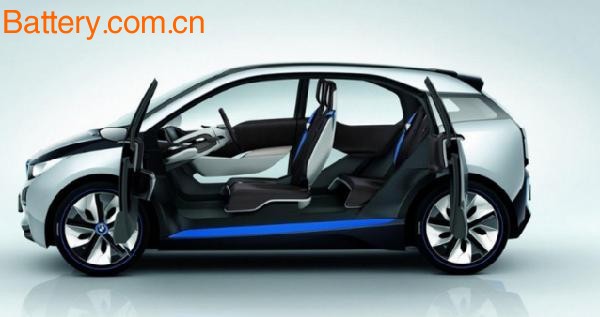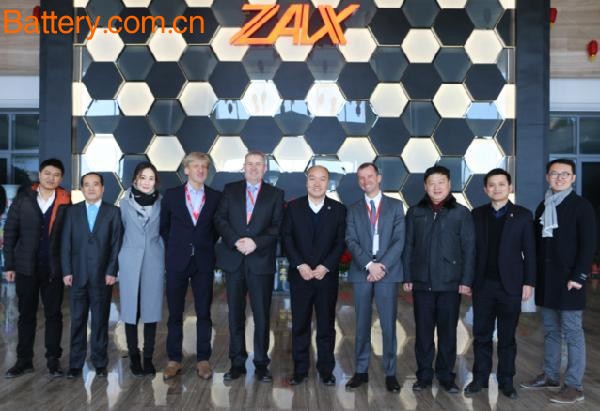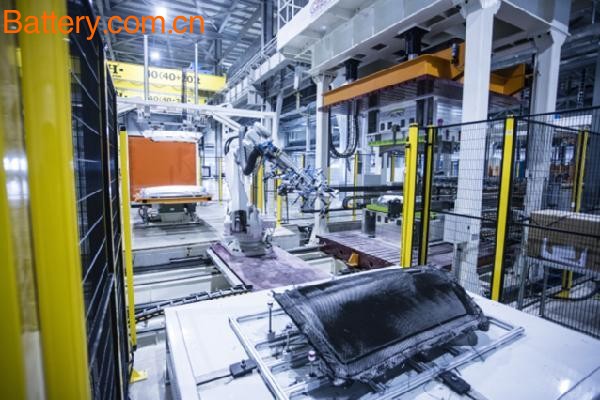In recent years, major auto companies have been vying to arrange new energy vehicles, and the industry is increasingly competitive. According to the national plan, by 2020, the production and sales of new energy vehicles will reach 2 million units, and the cumulative production and sales volume will exceed 5 million units. By 2025, the annual sales volume of new energy vehicles in China will reach 20% of the total demand of the automobile market, and the market prospect is broad. . New energy utilization efficiency needs to be improved In the traditional automotive industry, China is far from the world's leading level and is extremely difficult to surpass. However, in the field of new energy vehicles, China is on the same starting line as other countries in the world, and the government has given strong support in policy. However, the current penetration rate of new energy vehicles is not too high. It also stems from many problems in the development of new energy vehicles: including the improvement of vehicle design technology, the gap in performance of key components such as power batteries, inconvenient energy supply, and automobiles. Advanced energy-saving technologies have not been fully grasped and inconvenient to promote, etc. These factors have restricted the development of China's new energy automobile industry to varying degrees. But apart from this, a more obvious problem is that the current new energy is not well applied, and improving the efficiency of energy use is the most important issue. For example, in recent years, the development and industrialization of new energy vehicles represented by pure electric vehicles has been growing rapidly, and the annual high-speed growth of batteries has poured into our environment on an unprecedented scale. These electric vehicles have become the key to consuming a large amount of renewable energy. If the efficiency of existing new energy sources cannot be greatly improved, energy shortage will eventually lead to a series of higher pollution and more emissions. Negative effects. Car body integrated structure of carbon fiber composite material Car weight is the key: carbon fiber is the only way to reduce the weight of cars According to relevant research data, under the operating conditions of urban areas, if the average weight of electric vehicles with a weight of 1600kg is 20%, the energy consumption can be reduced by 15%, and the fuel consumption and emissions can be greatly reduced. Therefore, to reduce energy consumption and reduce vehicle weight is the key. In the short-term difficult situation of related technologies such as batteries, new energy vehicles urgently need to use lightweight technology to reduce weight to reduce the pressure on battery weight gain. Therefore, for new energy vehicle manufacturers, vehicle weight and energy are the key issues for new energy vehicles. In particular, the problem of vehicle lightweighting has always been a bottleneck that has plagued the development of the industry. 2015 "Germany lightweight inventory status quo" research note: "Lightweight for many industries such as automobile manufacturing industry, far-reaching, it determines the future of German industry in the global market, whether innovative, energy-efficient and resource-saving The product has achieved a dominant position.†Germany, a major automobile industry, attaches great importance to the development of lightweight vehicles. It can be seen that lightweighting will be the future development direction of new energy vehicles and the best way to reduce emissions and save energy. Achieving lightweighting ultimately requires lightweight materials for the body. The carbon fiber reinforced composite material is the lightweight material that has the best comprehensive performance so far and can be applied in engineering. Because carbon fiber composite material can reduce weight by more than 60%, it is the most ideal lightweight material. Carbon fiber composites were mainly used in the aerospace industry. For example, 90% of the surface of Boeing 787 is carbon fiber composite material, and carbon fiber composite material accounts for 50% of the structural weight. However, due to high product cost and long production cycle, it is promoted in the automotive industry. There are still difficulties in large-scale production. But now this situation has changed significantly. BMW launched the i3 and i8 all-carbon fiber electric vehicles in 2014. In 2015, it launched the new BMW 7 Series with carbon fiber and metal hybrid structure body, along with BMW's i3, i8 and With the advent of the new 7 Series, the global automotive carbon fiber lightweight boom is about to start, and carbon fiber will become the best choice and the only way for cars to be lightweight. In this context, companies represented by the Kangde Group and the Kangdexin Group have emerged in the country, integrating global superior resources and creating the world's only carbon fiber lightweight ecological platform, including: Zhong Anxin Technology Co., Ltd., KDX Redding Automobile Lightweight Design Center, located in KDX European Composites R&D Center in Munich, and German GFG and SGL companies supported by high-volume automated production technology, Kangde Composites Industry 4.0 Intelligent Factory; at the same time, the ecological platform has also realized Informatization of design, research and development, carbon fiber and flexible manufacturing of parts, forming a carbon fiber car body industry 4.0 intelligent manufacturing platform, with carbon fiber and component production scale; customer needs personalized customization; product design, research and development, manufacturing, testing and Intelligent life cycle such as logistics; the ability of supply chain and customer collaborative networking. The core of the platform – Kangde Composites offers a comprehensive range of carbon fiber lightweight solutions from design, R&D, prototype trials, inspections, small batch production to large-scale supply. At present, it has established business contacts with more than 30 vehicle manufacturers including Beiqi, Weilai Automobile and SAIC to jointly promote the application of carbon fiber composite materials in the field of automobile lightweighting, and help China's new energy electric vehicle industry to achieve cornering beyond. Mr. Li Bin, founder and chairman of Weilai Automobile, and Mr. Rong Hui, executive vice president of BAIC New Technology Research Institute, and Kangde Composite Materials Co., Ltd. Dr. Martin Sautter, Senior Vice President of BMW (China), and his team took a group photo with Kang De Composite and Zhong Anxin Team Energy efficient, carbon fiber or breaking the new energy car It is reported that in addition to its lightweight advantages, carbon fiber composite materials have the advantages of high designability, fatigue resistance, corrosion resistance, and good shock absorption performance. The weight of the vehicle body can shift the center of gravity of the vehicle and make the vehicle run more. safe and stable. Therefore, with the development of carbon fiber raw material prices and the progress of new processes and the compression of the production cycle, carbon fiber may be widely used in the automotive industry, driving new energy vehicles to improve energy efficiency, energy saving and emission reduction. Better improve the efficiency of the use of new energy in China's automobiles. It is reported that the Chinese government has set the standard for automobile fuel consumption by 2020, from 6.9L per 100 kilometers in 2015 to 5L per 100 kilometers. By 2025, the total weight of automobiles will drop by 25% on average. New energy electric vehicles will reach 2025. Will lose 50%. To do this, a large number of applications of carbon fiber composite materials will be the best choice at present. According to industry insiders, in the past, due to limitations in battery technology and other aspects, the mileage of new energy vehicles was limited. However, after the new energy carbon fiber new materials were used to achieve the goal of 30% weight reduction in 2020, the speed of popularization will accelerate. However, in the field of carbon fiber composite materials design, there are not many enterprises and talents engaged in the design of carbon fiber automobile mass production parts in China. The production of automotive carbon fiber parts requires the company's technical strength, production process and efficiency in research and development, design and mass production. Fortunately, the domestically leading Kangde composite material, which is dedicated to the lightweight carbon fiber of automobiles, has become an industry leader in this respect. In just one year, Kangde Composite Materials has taken the lead in building the world's largest and most technologically advanced industrial version 4.0 intelligent production line, with an annual output of 1.5 million carbon fiber composite parts and components, and a new generation of HP- The RTM and surface-RTM processes are mature and reliable, and the molding cycle can be shortened to 2-3 minutes. This solves the problem of large-scale production and time-cycle of carbon fiber composite materials, which is of great significance for solving the problem of lightweighting of new energy vehicles in China. Kangde Composite Industry Industry 4.0 Intelligent Manufacturing Factory The Chinese Academy of Engineering project team has proposed a high-performance fiber and automotive lightweight industry development strategy, pointing out that from 2016 to 2020, through the scientific and technological research, establish a high-performance fiber and automotive lightweight design and manufacturing technology system and industrial chain system. However, in the current view, Kangde Group is expected to rapidly improve the technical level of carbon fiber for vehicles and promote the application of new materials for new energy vehicles through the integration of high-quality foreign resources. It is expected to break the current stalemate in the development of new energy vehicles and will accelerate Promote the popularization of carbon fiber lightweighting of new energy vehicles and usher in the spring of new energy vehicles. These brush machines integrate the functions of drilling holes and tufting fibers together. On the basis of international cutting edge brush making technology and our own patented inventions, Haixing brush machines have been well recognized in China and abroad. Modular designs are adopted, and all the key components are of famous brands, or imported products. PLC touch screen control, easy and quick brush programming, standardized components, optional brush platforms, enable a stable and easy operation, and a convenient maintenance. Every machine is dedicatedly manufactured to satisfy customers' high requirements of quality standard. And dust suction unit is included to remove dust and waste material and keep the machine clean. Brush Drilling And Tufting Machine Brush Drilling And Tufting Machine, Plastic Broom Making Machine, Brush Drilling Machine, Paint Brush Making Machine, Strip Brush Making Machine, Plastic Brush Making Machine, Cnc Brush Machine, Brush Equipment Yangzhou Haixing CNC Brush Machine Co., Ltd. , https://www.brushmachine.com



